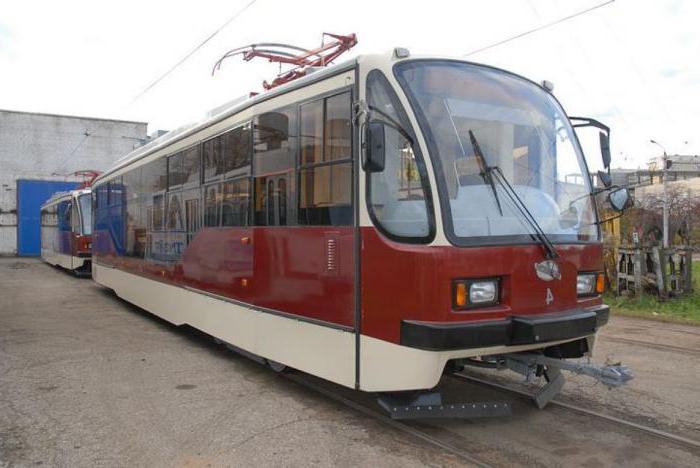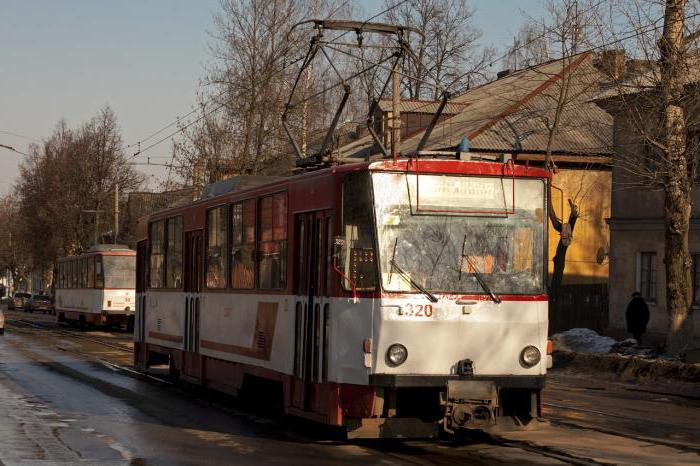Trams Tula: routes, schedule
Tula has a relatively large and branchedtram network. This type of public transport has appeared in the city for a long time, and still remains in demand. Now in Tula operates 9 tram routes and one tram depot. The total length of the tracks exceeds 90 km. Information about the timetable of trams in Tula is indicated on the official city website.

History of the city tram
The first trams Tula appeared on the streets of the city in1888 year. However, they could be called such only conditionally: in front of a small trailer moving along the rail line, the horses were walking. They were the source of traction for the early trams. Such transport was used until the First World War, after which the tram service in the city was not for many years.
Electric trams in Tula appeared only in1927, after the "Tramvystroy" office was organized and the first line of tracks was laid, which had a length of about 9 km. The official opening of the line took place in November 1927. The number of transport units was only 4 pieces, but soon their number was increased to six, and one was in reserve. The transfer between two neighboring stations cost at the time 8 cents.
Since 1929, there have been newlines, and in 1932 cargo lines were opened. Before the Great Patriotic War, the tram fleet numbered 72 leading and trailed cars and 6 freight cars. In 1939 a small depot was built. During the period of the city defense of 1941, trams were used to transport the wounded and ammunition. In the military conditions, additional lines were being built.

In the postwar years there was a restoration and modernization of the tram network. At the same time, the freight lines (including those built during the war years) were gradually dismantled.
Together with the construction of new tram linesThe park also received new wagons, which contributed to its renewal. One tragic circumstance was connected with this. Thus, in the early sixties new types of wagons with increased comfort were launched into the network. They served for 10 years, but in 1972 in one of them refused emergency braking, which caused the death of 10 people - passengers. After that all these cars were recycled.

In the 70s, there were 14 tram routes inThule, and the total number of cars was 250. In 1980 there were already 18 routes. In 1983, three-trolley trams began to walk around the city. However, in 1984 they were disbanded.
Last changes
In the 90s and early 2000s, a replacement was madedomestic wagons for imports. This was facilitated by a higher quality of foreign analogues. But after 2010 there is an active reduction of the number of tram routes in Tula.

As of 2016, the city operatesonly 9 routes with a total number of passenger cars in the amount of 86 pieces. There is also one tram depot. In addition, there are 18 service cars and two retro-cars - exhibits. The fare is 20 rubles. The price of a ticket for most citizens (residents of Tula) is 750 rubles.
Depot and maintenance points of trams Tula
For all time of existence in Tula tramtransport, several depots were created, most of which were later disbanded or liquidated. The first depot appeared in 1927. It lost its status in 1959, becoming a car repair shop. Another was built in 1939, and in 1979 - dismantled. The third depot (Oboronnoe) appeared in 1959, and in 2008 it was used to service the bus fleet. The last ("Krivoluchie") was created in 1973 and continues to fulfill its former functions.
Maintenance items of the type describedtransport also appeared or disappeared. So, the point at Kursk railway station existed from 1930 to 1965, the point in the village of Kirov - from 1930 to 1977, and at the Combine Plant - from 1936 to 1991.
The scheme of routes of trams of Tula trams
Modern scheme of tram routes includes15 numbers (valid - 9). The length of the routes is, on average, about 10 km (from 9.5 to 14.5 km). The tram time for each of them, on average, is 50 minutes (from 40 to 60 minutes).
The longest is the 10th route. Its length is 14.5 km, and the driving time is 60 minutes. It runs through the stadium "Metallurg", the Demidov dam, the confectionery factory "Yasnaya Polyana". The twelfth and thirteenth routes are considered an urban treasure, but some of the routes are abandoned.
In the historical past, the scheme of tram routesrepeatedly changed. New ones opened, while others closed. So, in the center of the scheme of urban tramways there is a closed circular section. However, it is formed due to the intersection of different routes, while none of them passes through it entirely.

Timetables for trams in Tula can be viewed on the official website of the city.
Future plans
Development of clean transport in Tulacontinues. So, in 2016 the tram fleet increased by another 30 units. It is supposed to make repairs on some sections of tram ways. In addition, plans to improve the lighting of some lines, as well as the construction of additional lines and the closure of the Proletarian Ring.
At the level of ideas, the possibility of moving tosystem of high-speed tram lines. This was expressed in 1971, but the plans were not implemented. Modern projects involve the modernization of only some tram lines, which must be enclosed in a ring. However, the practical implementation of these projects is still unlikely.
Modern degradation of the tram network
While the state of the Tula tram networkIt deteriorates due to the general dilapidation of the system. This situation is typical for many Russian cities. The trip in the tram, judging by the reviews of visitors to the city, began to resemble the movement in an old truck. The worsening of the quality of the tram ride in the Tula trams has been observed in the last 30 years, and this contributes to a decrease in the popularity of this type of transport among the population. To solve this problem, measures for repair and reconstruction of trains and tracks are necessary, the transport analyst Arkady Gershman believes. In his opinion, only simultaneous improvement of both trams and tracks will make this mode of transport more convenient and safer as it was before.
</ p>







